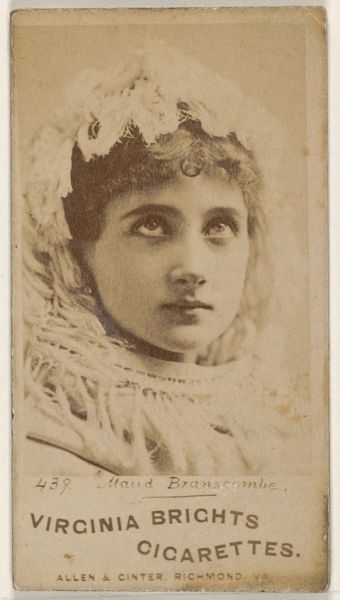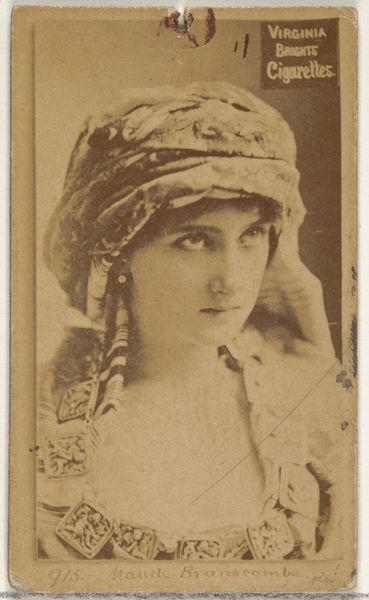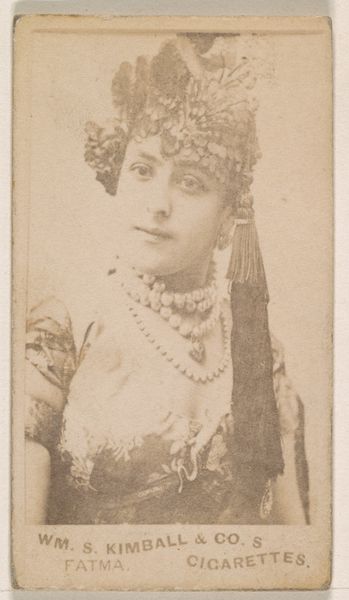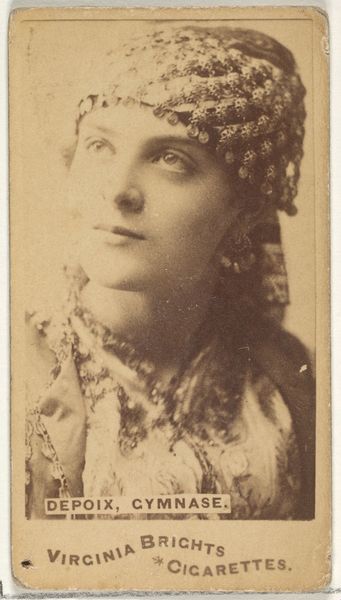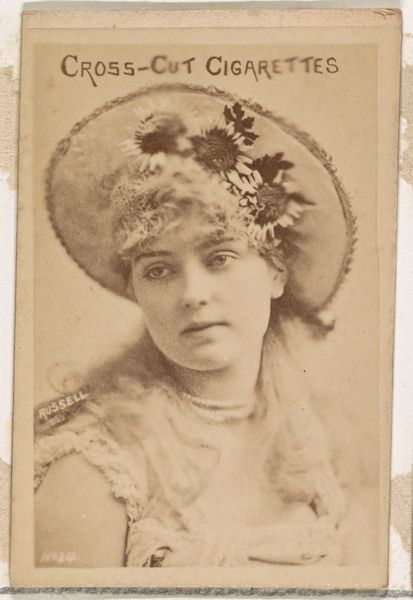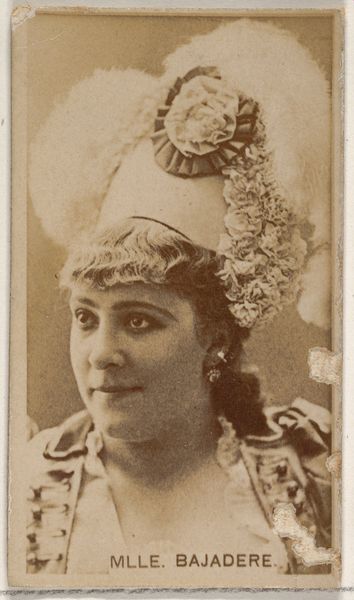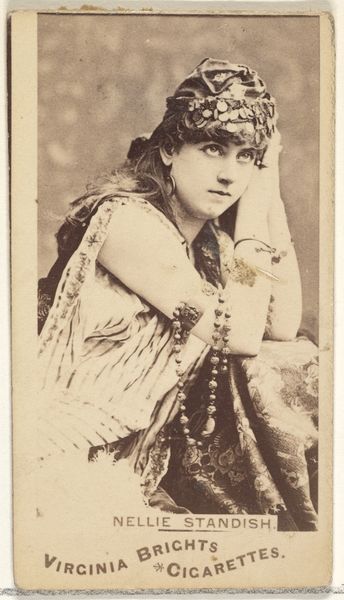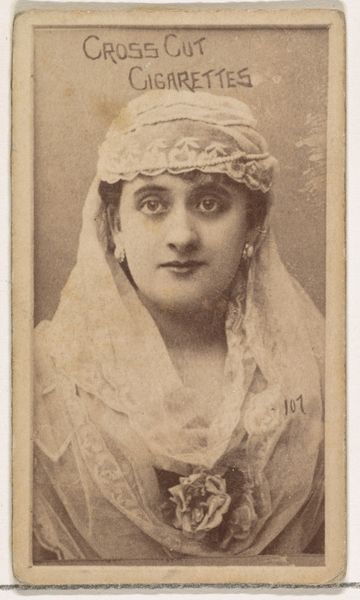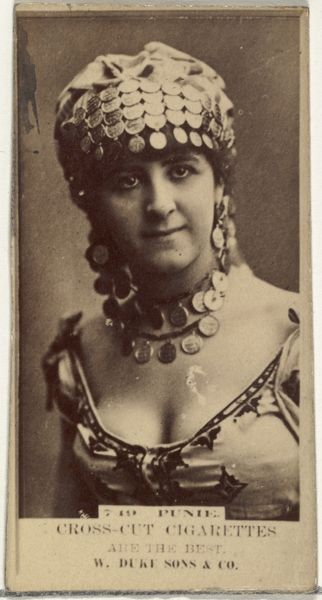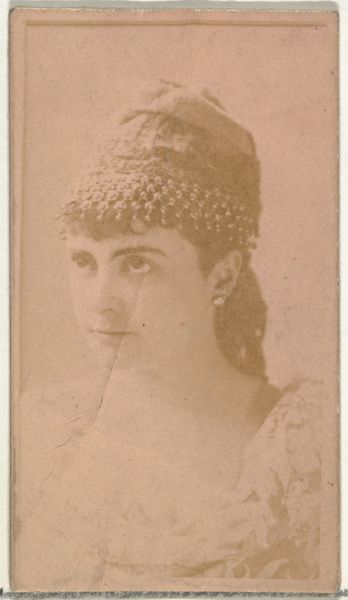
Actress wearing ornate cloth headpiece decorated with dangling coins, from Stars of the Stage, Third Series (N131) issued by Duke Sons & Co. to promote Honest Long Cut Tobacco 1891 - 1892
0:00
0:00
Dimensions: Sheet: 4 3/16 × 2 1/2 in. (10.6 × 6.4 cm)
Copyright: Public Domain
Curator: Good afternoon. Today we're looking at "Actress wearing ornate cloth headpiece decorated with dangling coins" from around 1891. This print comes from a series issued by Duke Sons & Co. to promote their Honest Long Cut Tobacco. Editor: It's captivating! There is something about the actress' gaze combined with the almost excessive ornamentation that makes it intensely striking. I'm immediately drawn to the tactile quality conveyed—I wonder how heavy that headpiece was! Curator: The composition is certainly constructed to focus on that contrast, guiding our sightline upwards. The symmetry of the image itself, particularly in her face and headpiece, evokes classical portraiture. The planes of the actress’s face establish balance—which is itself then juxtaposed with the decorative excess above. Editor: Yes, and thinking materially, the print itself signifies mass production; these cards were distributed with tobacco. It brings up questions about the labor involved—the designers, printers, and the often-anonymous workers churning these out on a massive scale to serve the burgeoning advertising industry. Curator: Precisely. Although created in series, note the subject's idealized form, the soft gradations in tone. One could almost forget it comes from commercial endeavor and mass consumption. But its formal composition and representational strategy elevate it above pure utility, even into the sphere of "high art." Editor: High art serving low art, so to speak! These trade cards collapse those boundaries, and reveal how images of performers, stagecraft, and fashion circulated and were consumed by broader audiences. I wonder who this actress was and whether this portrait served her in gaining visibility during this era. Curator: Good questions! What ultimately lingers is this tension between art and commerce. That formal harmony can’t conceal the material realities of its production—the hands that produced this—or, ultimately, the very practical purpose for which this "art" was conceived. Editor: I agree. These material considerations force us to think about a seemingly straightforward image and, by acknowledging it’s nature as object and advertisement, reflect upon its deeper implications concerning culture and labor in 19th century America.
Comments
No comments
Be the first to comment and join the conversation on the ultimate creative platform.
